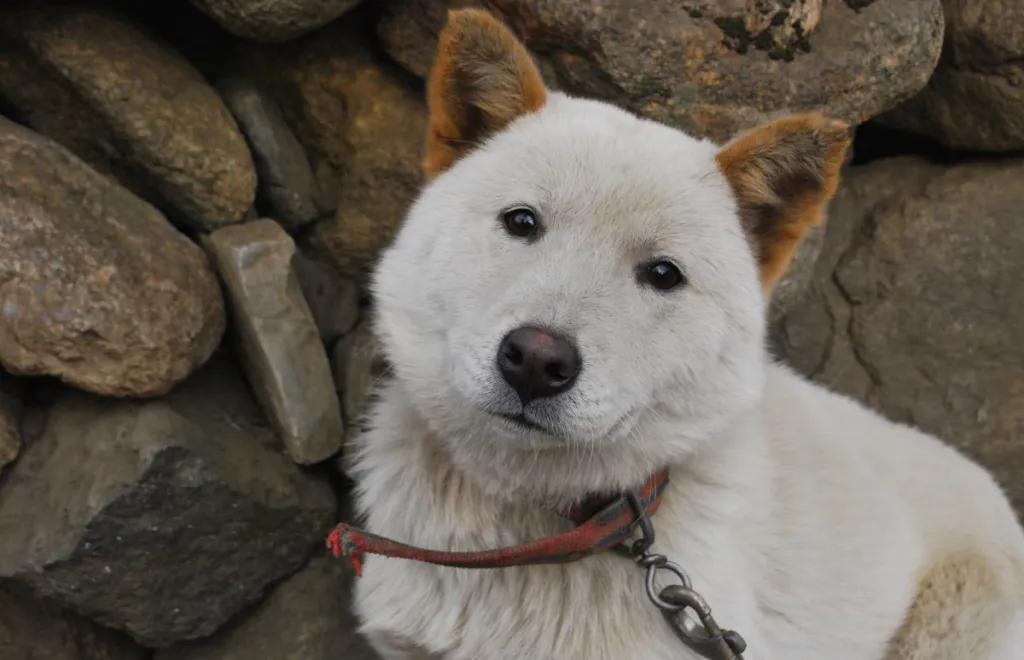Welcome to the world of the Korean Jindo, a breed renowned for its loyalty, intelligence, and spirited nature. As an animal expert, I’m here to guide you through everything you need to know about this remarkable dog. From their historical origins to modern-day care, let’s embark on an informative and engaging journey to discover all about the Korean Jindo.
Origins and History of the Korean Jindo
Ancient Roots
The Korean Jindo, also known simply as Jindo, hails from Jindo Island in South Korea. This breed has a rich history that dates back centuries, and they are deeply embedded in Korean culture. These dogs were traditionally used for hunting due to their remarkable tracking skills and keen sense of direction.
Cultural Significance
In South Korea, the Jindo is considered a national treasure and is protected under the Cultural Properties Protection Act. The breed’s pure lineage is maintained with great care, and they are often celebrated in festivals and cultural events.
Physical Characteristics
Size and Build
Jindos are medium-sized dogs, typically weighing between 35 to 50 pounds and standing about 18 to 22 inches tall at the shoulder. They have a well-proportioned, muscular build that exudes both strength and agility.
Coat and Colors
Jindos have a double coat, with a soft, dense undercoat and a harsh, straight outer coat. Common coat colors include white, fawn, grey, black, black and tan, and brindle. The coat is weather-resistant, providing protection against harsh elements.
Temperament and Personality
Loyalty and Devotion
One of the standout traits of the Korean Jindo is their unwavering loyalty. These dogs form strong bonds with their families and are known for their protective nature. They are often aloof with strangers but show deep affection and loyalty to their owners.
Intelligence and Independence
Jindos are highly intelligent and can be quite independent. This intelligence makes them quick learners, but it also means they can be a bit stubborn. Consistent and positive training methods are essential to harness their capabilities.
Energy Levels and Exercise Needs
Jindos are energetic dogs that require regular exercise to stay healthy and happy. They enjoy activities like hiking, running, and playing fetch. Without adequate physical and mental stimulation, they can become bored and develop behavioral issues.
Training and Socialization
Early Socialization
Early socialization is crucial for Jindos to develop into well-rounded adults. Exposing them to different people, environments, and other animals from a young age helps mitigate their natural wariness of strangers.
Positive Reinforcement
Given their intelligence and sometimes independent streak, Jindos respond best to positive reinforcement training methods. Use treats, praise, and play to motivate and reward good behavior. Harsh training methods can backfire and lead to trust issues.
Consistency is Key
Consistency is essential when training a Jindo. Establishing clear rules and maintaining a regular training schedule helps them understand what is expected of them. Patience and persistence will pay off in the long run.
Health and Care
Common Health Issues
Jindos are generally healthy dogs with a lifespan of 12 to 15 years. However, they can be prone to certain health issues, including:
- Hypothyroidism: A condition where the thyroid gland doesn’t produce enough hormones, leading to weight gain and lethargy.
- Hip Dysplasia: A genetic condition affecting the hip joints, which can lead to arthritis and mobility issues.
Regular veterinary check-ups and a healthy diet can help manage and prevent these conditions.
Diet and Nutrition
A balanced diet is crucial for a Jindo’s health. High-quality dog food that meets their nutritional needs is essential. Consult with your veterinarian to determine the best diet plan, considering factors like age, weight, and activity level.
Grooming
Jindos are relatively low-maintenance when it comes to grooming. Their double coat requires regular brushing to remove loose hairs and prevent matting, especially during shedding seasons. Bathing should be done as needed, typically every few months.
Living with a Jindo
Family Compatibility
Jindos can make excellent family pets, especially for active families who can meet their exercise needs. They are generally good with children but may have a strong prey drive, so supervision is necessary around smaller pets.
Living Environment
While Jindos can adapt to various living environments, they thrive in homes with access to a yard where they can run and play. They are not well-suited to apartment living unless they receive plenty of daily exercise.
Adopting a Jindo
Finding a Reputable Breeder
If you decide to purchase a Jindo from a breeder, it is crucial to find a reputable one who prioritizes health and temperament. Ask for health clearances for the puppy’s parents and visit the breeding facility to ensure the dogs are well cared for.
Rescue and Adoption
Adopting a Jindo from a rescue organization is a great alternative to buying from a breeder. Many rescue groups specialize in Jindos and can help match you with a dog that fits your lifestyle. Adopting a rescue dog gives a deserving animal a second chance at a loving home.
Conclusion
The Korean Jindo is a remarkable breed known for its loyalty, intelligence, and spirited nature. Whether you’re captivated by their cultural significance or their steadfast devotion, Jindos make wonderful companions for those who can meet their needs. With proper training, socialization, and care, a Jindo can bring joy and companionship to your life for many years.
- Best Clay Alternatives for 2025 - April 19, 2025
- Best Seamless.ai Alternatives for 2025 - April 19, 2025
- Best UpLead Alternatives for 2025 - April 18, 2025



